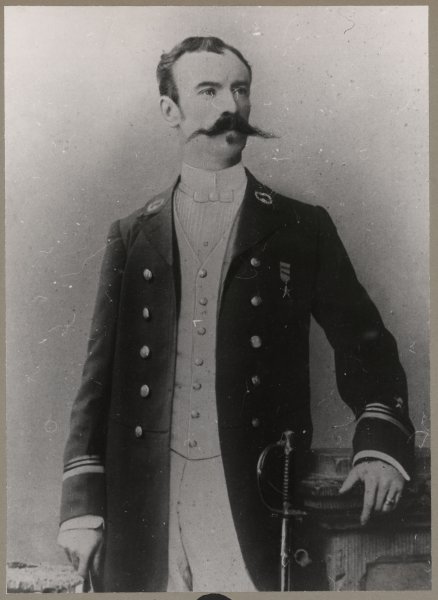MO.0.0.28616

Ivoren signaalfluitjes met modulatiegat / Sifflets en ivoire à trou de modulation / Ivory whistles with modulation hole. [Pende]. Kwilu, RD Congo. Late 19th century. Ivory. Purchase. MO.0.0.28616
Acquired during a violent period
This whistle comes from a collection of 117 objects from the Congo Free State. They were brought to Belgium by the Belgian soldier Léon Rom. The collection primarily consists of small utensils, comparable with other collections put together in this period, mostly Kuba objects that correspond to the aesthetic taste of the time (cups, boxes, textiles). This whistle was sold to the museum by Léon Rom’s widow in 1925.
Léon Rom (1860-1924) joined the civil service in the Congo Free State in 1886. He was appointed District Commissioner of Matadi and then, in 1890, he became a second lieutenant in the Force Publique; later, he was made chief of the military post in Léopoldville (present-day Kinshasa). It was here that Rom could have met the Anglo-Polish writer Joseph Conrad (1857-1924), the author of Heart of Darkness, who drew on his memories of the Congo - but also on the messages that reached him after his return in December 1891 - when writing his novel, which was published in 1899.
Apparently, Rom was the inspiration for one of the most infamous characters in this book, Kurtz, an ivory trader. Many certainly see some of Kurtz’s character traits in a story inspired by the violence that Rom demonstrated at his post in Stanley Falls (1894-1895), where his house had a flowerbed encircled with human skulls.
Prestige object without context
It is difficult to ascertain the context in which this piece was acquired because the circumstances are not specified in the museum archives, unlike all the other pieces in this collection. Older labels on the objects indicate that they were not necessarily obtained by Rom, as the title ‘collecting officer’, followed by a personal name, appears alongside other designations, such as ‘indigenous name, village name, category’, etc.
Most objects, however, appear to have been transported without descriptive labels; so, as is often the case, their identification within the Museum’s departments happened by comparison with the institution’s already known and documented collections.

Portrait of L. Rom. s.d. MRAC Tervuren, HP.1955.54.283.